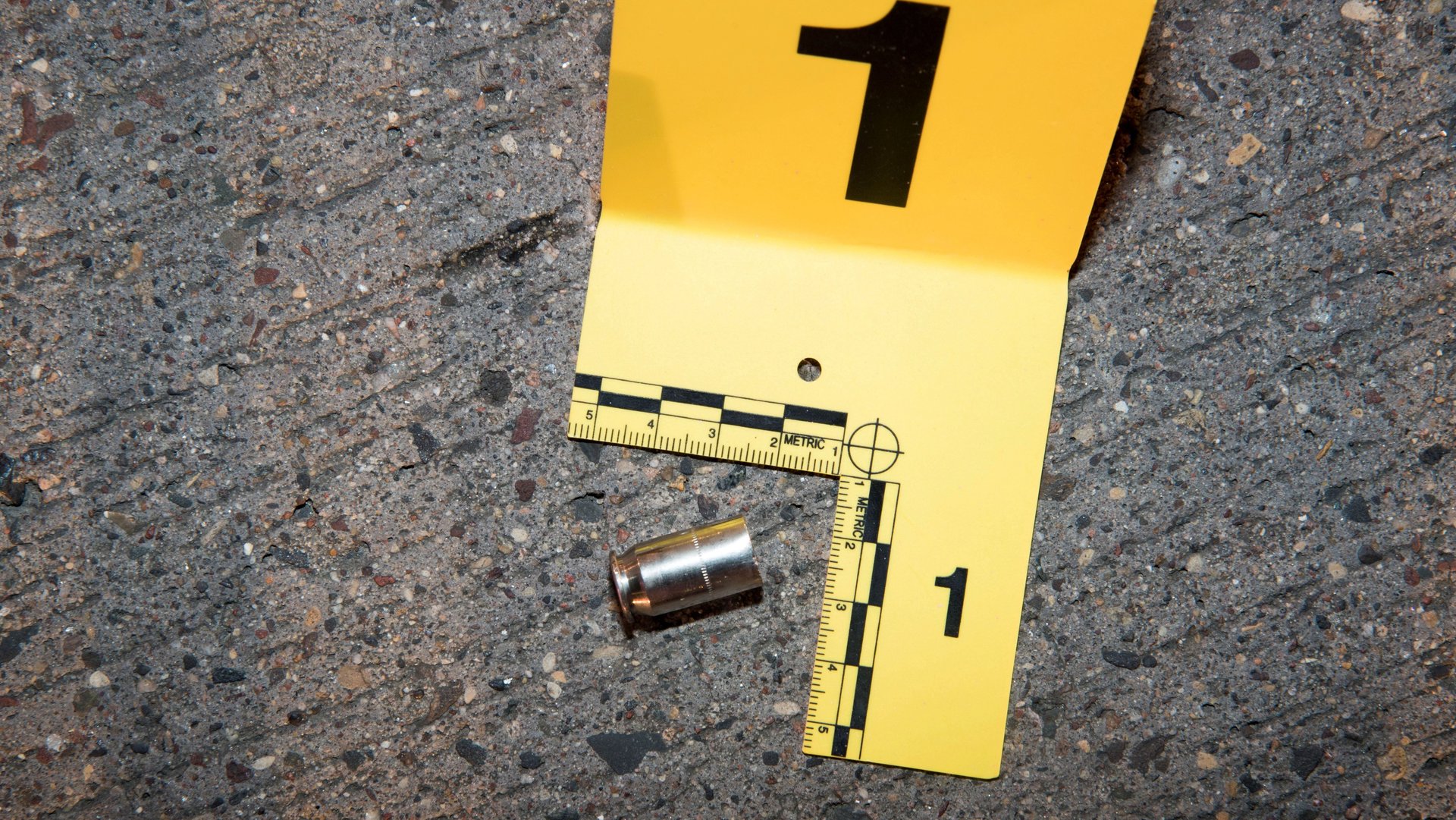The tool revolutionizing the tracing of guns in the US has a blindspot
When you fire a gun, it leaves a “ballistic fingerprint” on the shell casings, markings that are unique to that weapon. Shell casings recovered at US murder scenes can be subsequently entered into the National Integrated Ballistic Information Network, where they are compared against all the guns already in the NIBIN database. Even if there’s no match, the information is stored away for future use.


When you fire a gun, it leaves a “ballistic fingerprint” on the shell casings, markings that are unique to that weapon. Shell casings recovered at US murder scenes can be subsequently entered into the National Integrated Ballistic Information Network, where they are compared against all the guns already in the NIBIN database. Even if there’s no match, the information is stored away for future use.
“Down the line, if a person is arrested with a firearm on him, you test fire the gun then you take the casings and enter them into NIBIN,” Luke Laterza, a former Newark, New Jersey police sergeant who ran the city’s ballistics lab before retiring in 2016, told Quartz. “If those match, you’ve got the gun used in the murder.”
Access to the technology can be of huge assistance, especially to smaller police agencies that don’t have their own tracking systems.
“When you pull that trigger and that explosion occurs, a couple of things are happening,” Laterza explained. “Hardened steel against a substantially softer metal like brass—the harder metal’s going to imprint on the softer metal, indicating the toolmark unique to that firearm and that firearm only.”
Once the spent shell casing is physically loaded into the NIBIN apparatus, which Laterza says looks “sort of like a Keurig coffee machine,” the system takes an extremely detailed high-definition image of it and picks up markings not visible to the naked eye. These photographs are then entered into the NIBIN database to be shared with all other connected agencies.
The value of database does have its limits. Even if a match is found, Laterza said, “it doesn’t necessarily mean that person did the shooting, because there are things called ‘community guns‘”—shared firearms used by multiple members of a gang or other criminal organization. (A single .40-caliber “community” Glock recovered in Syracuse, New York had been used 37 times, killing one and wounding nine.)
US officials are now planning to open the network to 22 more state and local law-enforcement agencies, enabling police to link a gun’s “fingerprint” to crimes within and beyond their jurisdictions.
“Investigators will now receive investigative leads within 48 hours. They will have new opportunities to disrupt the shooting cycle and make our communities safer,” Thomas Brandon, deputy director of the federal Bureau of Alcohol, Tobacco, Firearms and Explosives, said in a statement.
The network “is to ballistics what CODIS [the FBI’s Combined DNA Index System] is to DNA,” said Joe Giacalone, a former New York City police cold-case squad commander who is now a professor at the John Jay College of Criminal Justice.
Still, a “hit” on NIBIN is only the beginning. ”It puts you in the right direction, but you need a trained eye to make the call that it’s a match,” said Laterza. “You still have to compare it under the microscope.”
NIBIN’s usefulness has one major gap: It only processes shell casings, not bullets themselves. This means NIBIN is virtually useless unless the gun used in a crime was a semiautomatic, said Laterza.
“Revolvers do not discharge cartridge casings,” he continued. “NIBIN works excellently for firearms that discharge cartridge casings through the ejection port. But revolvers? Lemme tell you something—they start getting keen, [crooks] will start using more revolvers.”
According to former Newark lieutenant James O’Connor, who spent time assigned to a joint ATF-Newark task force, the NIBIN system helped him “track a lot of bad guys down.”
“One guy, he had a machine gun and he was going around robbing all the bodegas in the south and west districts of Newark,” O’Connor told Quartz. “And he’d always fire a shot. We were able to trace him to 28 armed robberies by the shell casings. We finally caught the guy. We got lucky because his TEC-9 [semiautomatic machine pistol] jammed.”
There are some other obstacles that prevent NIBIN from being used to the maximum extent. As recently reported by Ann Givens of The Trace, only 25% of all ballistics evidence collected nationwide is entered into NIBIN. Cost can be a sticking point. Although some local police departments in California have deployed NIBIN, the state crime lab hasn’t. The California Department of Justice said it would take more than $12 million for it to do so.
The cities with departments receiving NIBIN access include Anchorage, Alaska, Des Moines, Iowa, and Lexington, Kentucky. A handful of others, including Detroit, Philadelphia, and Cincinnati, will be getting extra equipment to upgrade their existing systems.